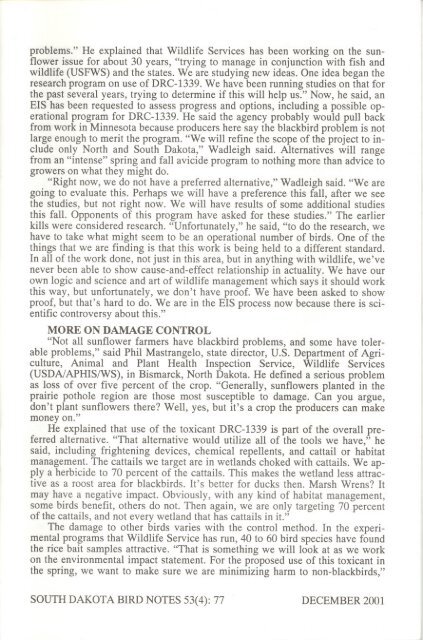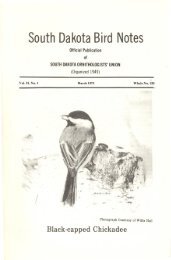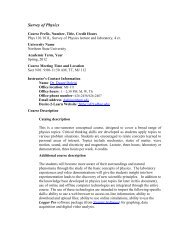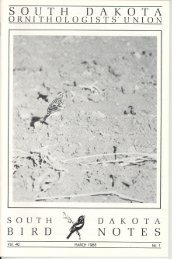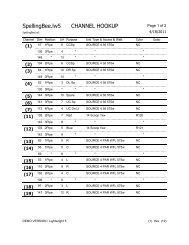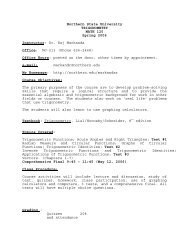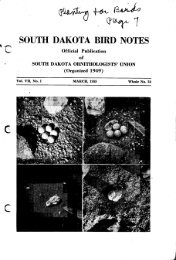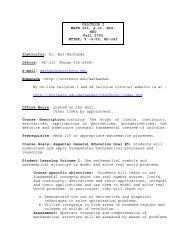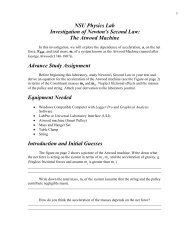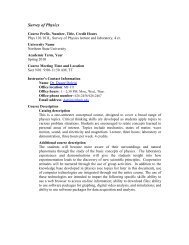field. But those birds are easier to harass; they move quicker. The damage isdone when the birds eat the seeds, pull them out of the plant head. When youcheck a plant head, three-quarters of the seeds might be gone, with the poorestseeds left in place."The association, which has about 10,000 members, supports the DRC-1339avicide (poison) program, Kleingartner said. "There are so many blackbirds it isunmanageable. We are in a wet cycle in the Upper Midwest. Goose and ducknumbers have increased, and so have blackbird numbers, but there is no huntingof blackbirds as there is of ducks and geese." In a letter commenting on the currentAPHIS permit application, Kleingartner wrote, "It is unlikely that there areother pesticides that have been as thoroughly researched as DRC-1339. We recognizethat this is an emotional issue. But farmers must be able to protect theirinvestment in the production of crops as urban dwellers protect their largest investment(house) from rats and other undesirable species."The blackbirds targeted in the research projects from 1994 to 1999 werekilled with a poison known as DRC-1339. While it also affects other bird species,it is known to be particularly lethal for Icterids, members of the blackbirdfamily. It kills by attacking the birds' hearts and kidneys. Death is caused by uricpoisoning, usually within 72 hours. The poison is applied to rice kernels that arescattered in controlled baiting plots. One treated kernel will kill a blackbird."DRC-1339 is attractive as a poison because it breaks down quickly in theenvironment," said Dr. Dan Hubbard, professor in the Department of Wildlifeand Fisheries Sciences at South Dakota <strong>State</strong> <strong>University</strong> in Brookings. "It isrelatively specific to a couple of families of birds. Corvids (crows, ravens, jays,and magpies) and Icterids (blackbirds, meadowlarks, orioles, cowbirds, andBobolinks) are the major groups this is used on. This chemical takes out the kidneys.Basically, the bird dies of renal shutdown, of uric acid poisoning. It generallytakes from a few hours to a few days for the bird to die. This is determinedby the sensitivity of the species to the chemical and the amount of toxin taken in.The bird dies a slow and agonizing death, that is my perception. (APHIS literaturesays the birds die "a quiet death within one to three days of ingestion.")Since the poison is slow acting, if a bird gets a lethal dose, it can fly quite a waybefore the chemical kicks in. It's difficult, therefore, to find the dead birds."Hubbard has done research with the chemical in a study funded by the SunflowerGrowers Association and the South Dakota Department of Game, Fish,and Parks. It focused on Ring-necked Pheasants, and it showed mixed responsesto the product. "On other species," he said, "we did not show it was safe, we didnot show it was not safe. But poison on the fields is an accident waiting to happen.Sparrows could land on that field during a storm, and boom. We don't knowhow this chemical affects them. They have not studied it under the right conditions."Asked for an opinion on the sensitivity of birds in general to this poison, Dr.Pat Rettig of the Raptor Center in St. Paul said one could not make a statementabout a particular species unless species-specific testing had been done."Our role in APHIS-Wildlife Services is the management of damage whenwildlife and people come into conflict," said Rick Wadleigh, national coordinatorfor the agency, who works in Lakewood, Colorado. "Our mandate is fromCongress. The mandate includes birds. We study the best methods of doing thiswork, and conduct campaigns for destruction and control of animals causingSOUTH DAKOTA BIRD NOTES <strong>53</strong>(4): 76 DECEMBER <strong>2001</strong>
problems." He explained that Wildlife Services has been working on the sunflowerissue for about 30 years, "trying to manage in conjunction with fish andwildlife (USFWS) and the states. We are studying new ideas. One idea began theresearch program on use of DRC-1339. We have been running studies on that forthe past several years, trying to determine if this will help us." Now, he said, anEIS has been requested to assess progress and options, including a possible operationalprogram for DRC-1339. He said the agency probably would pull backfrom work in Minnesota because producers here say the blackbird problem is notlarge enough to merit the program. "We will refine the scope of the project to includeonly North and South Dakota," Wadleigh said. Alternatives will rangefrom an "intense" spring and fall avicide program to nothing more than advice togrowers on what they might do."Right now, we do not have a preferred alternative," Wadleigh said. "We aregoing to evaluate this. Perhaps we will have a preference this fall, after we seethe studies, but not right now. We will have results of some additional studiesthis fall. Opponents of this program have asked for these studies." The earlierkills were considered research. "Unfortunately," he said, "to do the research, wehave to take what might seem to be an operational number of birds. One of thethings that we are finding is that this work is being held to a different standard.In all of the work done, not just in this area, but in anything with wildlife, we'venever been able to show cause-and-effect relationship in actuality. We have ourown logic and science and art of wildlife management which says it should workthis way, but unfortunately, we don't have proof. We have been asked to showproof, but that's hard to do. We are in the EIS process now because there is scientificcontroversy about this."MORE ON DAMAGE CONTROL"Not all sunflower farmers have blackbird problems, and some have tolerableproblems," said Phil Mastrangelo, state director, U.S. Department of Agriculture,Animal and Plant Health Inspection Service, Wildlife Services(USDNAPHIS/WS), in Bismarck, North Dakota. He defined a serious problemas loss of over five percent of the crop. "Generally, sunflowers planted in theprairie pothole region are those most susceptible to damage. Can you argue,don't plant sunflowers there? Well, yes, but it's a crop the producers can makemoney on."He explained that use of the toxicant DRC-1339 is part of the overall preferredalternative. "That alternative would utilize all of the tools we have," hesaid, including frightening devices, chemical repellents, and cattail or habitatmanagement. The cattails we target are in wetlands choked with cattails. We applya herbicide to 70 percent of the cattails. This makes the wetland less attractiveas a roost area for blackbirds. It's better for ducks then. Marsh Wrens? Itmay have a negative impact. Obviously, with any kind of habitat management,some birds benefit, others do not. Then again, we are only targeting 70 percentof the cattails, and not every wetland that has cattails in it."The damage to other birds varies with the control method. In the experimentalprograms that Wildlife Service has run, 40 to 60 bird species have foundthe rice bait samples attractive. "That is something we will look at as we workon the environmental impact statement. For the proposed use of this toxicant inthe spring, we want to make sure we are minimizing harm to non-blackbirds,"SOUTH DAKOTA BIRD NOTES <strong>53</strong>(4): 77 DECEMBER <strong>2001</strong>
- Page 1:
I .SOUTH DAKOTA IORNITHOLOGISTS'UNI
- Page 4 and 5:
fication of Birds of North America
- Page 6 and 7:
- - ~1180 individuals banded and 20
- Page 8 and 9:
L--: --..Dean, K. L. 1999. Stopover
- Page 10 and 11:
I was listening to an unusual sparr
- Page 12 and 13:
..of Black-backed Woodpeckers incre
- Page 14 and 15:
.~24 Sep Meade JLB ... Late [l5-Nov
- Page 16 and 17:
..-- --- --Yankton SVS; 02 Aug Robe
- Page 18 and 19:
..American Tree Sparrow Early: 03 O
- Page 20 and 21:
PubUshed bySOUl1l DAKOTAORNI1HOLOGI
- Page 22 and 23:
SOUTH DAKOTA BIRD NOTES, the offici
- Page 24 and 25:
..ess that is being fought against.
- Page 26 and 27: White-fronted Goose 13% 6Snow Goose
- Page 28 and 29: Hairy Woodpecker 91% 41Black-backed
- Page 31 and 32: - - -Grzybowski, 1. A. 1999. Southe
- Page 33 and 34: en0ẹ..,::r:t:J~0~OJ....:;.:;t:JZ0
- Page 35 and 36: ~A GUIDE TO THE BIRDS OF THE PHILIP
- Page 37 and 38: Brookings KIE; 11 Feb Hughes RDORed
- Page 39 and 40: TJ; 20 Jan Hughes JSP, RFSPurple Fi
- Page 41 and 42: ~!I: ORNITHOLOGISTS'I SOUTH DAKOTAU
- Page 43 and 44: ..~PRESIDENT'S PAGEI had such a bla
- Page 45 and 46: -erably prior to consulting a field
- Page 47 and 48: SUBMITTEDFOR CONSIDERATIONEurasian
- Page 49 and 50: '"young cormorants, near flight sta
- Page 51 and 52: - --"only one genus of the family S
- Page 53 and 54: ~SEASONAL REPORTSThe 2001 Spring Se
- Page 55 and 56: ----KM; 08 Apr Butte JLBCinnamon Te
- Page 57 and 58: ,-----0Apr Minnehaha RBA; 17 May Be
- Page 59 and 60: Pileated Woodpecker Only Report: 15
- Page 61 and 62: 07 MayUnion RBA ...Late: 12 May McC
- Page 63 and 64: ,I~haha RFS, JSP; 11 May Meade EEMB
- Page 65 and 66: Contributing ObserversRBADBJLBKBAPB
- Page 67 and 68: .~lSD State Lists (31 December 2000
- Page 69 and 70: - ---- JSOU T H D A K 0 r~ORNITHOLO
- Page 71 and 72: ...~PRESIDENT'S PAGEThe September m
- Page 73 and 74: emained at the refuge for 11 days b
- Page 75: _INelson has cut back sunflower pla
- Page 79 and 80: within two hours.) Some non-target
- Page 81 and 82: '\of USFWS, Mountain-Prairie Region
- Page 83 and 84: takes three days for the bird to di
- Page 85 and 86: - ,..,rcording to Gamble.NORTH DAKO
- Page 87 and 88: ~IrSMALL RESEARCH GRANTS AVAILABLE
- Page 89 and 90: ';IWhite-faced Ibis reported from H
- Page 91 and 92: Whip-poor-will Reported from Lincol
- Page 93 and 94: Meade, Pennington and Stanley co.Ea
- Page 95 and 96: REPRFSSSNSSVSDRSDSRandy E. PodollRo


